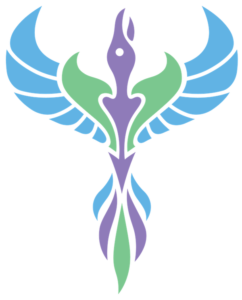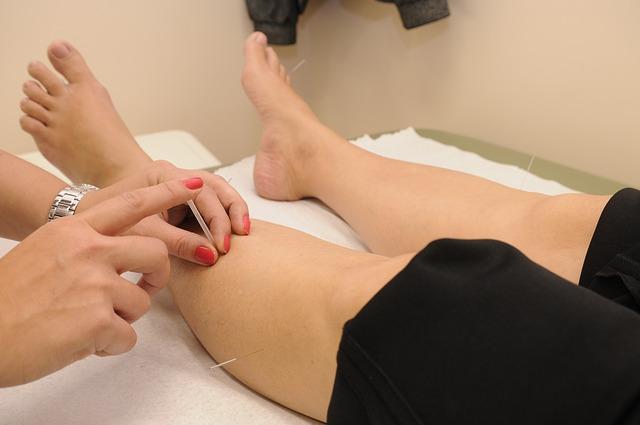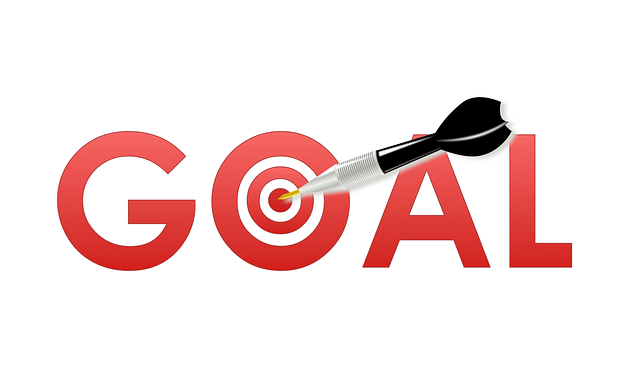Blog
Acupuncture for Athletic Injuries
Athletes in Park Slope are frequently injured
It’s the nature of sport: while you are doing your body a tremendous amount of good, you are also putting a tremendous amount of extra strain on your body at the same time. The degree to which you strain your body depends on the degree of your training, but for each athlete the story is the same- you are doing a lot more to your body than someone who sits on the couch all day. For example, the very nature of muscle building requires you to create micro-tears in the muscle which then repair to grow stronger. Among the most common injuries in sport are joint sprains Injuries in sports generally fall into two categories:
- acute traumatic injury
- overuse/repetitive trauma injury
Acupuncture for athletic injuries in Park Slope
A sprain or strain usually involves inflammation and swelling of the affected region. The standard response that most people find success with involves the acronym RICE: Rest, ice, compression, elevation. And while there is no messing with conventional wisdom, many athletes are finding that another element can be added into the recovery program (although it doesn’t fit anywhere in the acronym): acupuncture.
At Park Slope Chiropractor, we have two main goals when approaching athletic injuries with acupuncture: 1.) to stop pain quickly and 2.) to improve recovery time from the injury. Acupuncture stimulates the body’s adrenaline response to combat pain during treatment, while also rectifying the identified disorder and restoring internal harmony. It is clinically shown to reduce inflammation and swelling.
Treating sports injuries in Park Slope, Brooklyn
At Community Chiropractic and Acupuncture, we have experience treating athletic injuries using both chiropractic therapy and acupuncture. If you are itching to get back on the playing field, but a nagging complaint is holding you back, give our office in Park Slope a call to schedule an appointment today.
Stretching from Bed
Why bother to get out of bed?
If you are feeling extra lazy on your day off, you don’t have to get out of bed to still give your body some relief with a good stretch. If you are destined for bed on a rainy Sunday, remember that muscle tension will still accumulate; so make some moves from the mattress to keep them at back and keep on relaxing!
From bed, let the stress melt away and try a few simple stretches.
…and of course, always remember to practice deep breathing, especially in bed. The extra influx of oxygen will help you relax further and treat your muscles at the same time. Here are stretches that target the back and hips- two regions that tend to accumulate the most tension during the regular course of life.
- Hamstring stretch: lay flat, and lift one leg up. Raise it as high and straight as possible while keeping your butt planted on the bed. Hold 30 seconds, then switch legs.
- Knee to chest: lay flat. Bring one knee up to your chest, clasping the thigh with both hands. Hold 30 seconds, then repeat with opposite leg.
- Spine twist: Lay flat, bring both knees up to your chest; cross them over and drop down to the right side of your body. Extend left arm the opposite direction and look over your left shoulder. Hold 30 seconds and repeat.
Relaxing, stretching and feeling better with chiropractic in Park Slope
The bed is a cornerstone of wellness. At Park Slope Chiropractic, we want to help you leave pain behind so that you can relax well all the time. If you are suffering from long-standing pain, give our office a call to schedule an appointment today. We can help you determine the root cause of your pain and set a course for treatment that involves chiropractic adjustment, stretching and strengthening that will keep your pain at bay.
What Time of Day is Best for Working Out?
The real debate should be: what time suits you best for working out?
Whether you feel the motivation first thing when you step out of bed or need a workout to wind down after a day’s work, whatever way works for you is the right way! However, it is always worth noting the advantages of each time in case you are considering changing your routine. You can also adjust your workout time to match your motives: do you want more muscle? or to lose more weight? Read on to find out when the best time is to do each.
Working out in the morning vs. afternoon
- Morning: attention weight watchers! A morning workout has been shown to curb appetite which means that not only are you burning calories but also limiting their intake, a big boost for your caloric balance. Furthermore, the less food you have in your stomach, the more body fat is burned during a workout. Sticking to your workout schedule is made easier in the mornings because it is less likely to conflict with other social engagements and you haven’t corroded your willpower after a long day at work.
- Afternoons offer the chemical advantage for working out. Stress hormones (which aid in fat storage) are lowest and testerone (important for muscle growth) is highest in the afternoon. Your body temperature, and thus muscle temperature, is higher meaning that you are more flexible and you may take more out of each workout. Furthermore, you performance will be at its peak because heart rate and blood pressure are low and your brain is sharp for enhanced reaction time.
The takeaway from working out in the morning vs. afternoon
Some people would look at this and say there is a clear chemical advantage working out in the afternoon. While this may be so, a morning time routine can be more effective if it fits your lifestyle better. We can help get your body in conducive shape to reap the benefits of a workout no matter what time of day you think is best. Give our office in Park Slope a call to schedule an appointment today.
Dr. Karen Thomas, D.C.
Are you Neglecting your Lower Back Muscles
Even the most conscious gym-goers can neglect important muscles
Case in point: the muscles of the lower back which are often neglected during people’s pursuit of the “mirror muscles-” abs, biceps and pecs that make you look attractive but leave you short on stability. Building a great body means building balance, and the muscles of the lower body are essential for stability and spinal health. What’s the point of looking great or having a lot of muscle if the most crucial structures of your body can’t bear the load that this extra muscle brings on? Here are three new sets of muscle to focus on during your next gym session:
- Extensors: posterior muscles which allow for lifting and standing. Among them is the erector spinae which allows the spine to stand straight.
- Flexors: attach to the front of the spine and allow for flexing, bending and lifting.
- Obliques: attach to the side of the spine and allow for rotation.
All these muscles work together to help you maintain proper posture, which is the first pitfall of not training them- it makes posture all the more difficult. From here, the problems compound, especially when you are asking your lower back to bear more strain as you scale up your ab routine.
Neglecting your lower back no longer
There are many exercises and stretches which can be easily learned and quickly added into your routine to ensure that you are rounding out your exercise and contributing to spinal health. After all, these are the muscles that matter most for the longevity of your body. Chronic pain, postural problems and degradation of the spine can all be prevented by paying attention to the conditioning of the lower back muscles. To resolve pain in the lower back, establish good posture and restore spinal balance, give our office in Park Slope a call to schedule an appointment today.
Dr. Karen Thomas, D.C.
Putting a Needle in Period Pain
Acupuncture is a powerful tool for women’s health
To demonstrate this point, let’s take a look at the efficacy of acupuncture when it comes to treating something common during the days leading up to and during a period: cramps. Scientifically known as dysmenorrhea, pain during menstruation does nothing more than add to the stress of your period. Pain is most often experienced in the lower abdomen, pelvis and lower back, and generally responds well to pain relieving medication. However, some women look for a more natural way to deal with menstrual cramps and acupuncture is a great way to do this.
How acupuncture works to treat menstrual pain
By freeing the body from stagnation, acupuncture encourages your blood to circulate smoothly, reducing pain from cramps and headaches. When combined with simple stretching that focuses on the abdomen, hip flexors and lower back, you can effect great improvements with pain relief without reaching into the medicine cabinet.
Your acupuncture specialist in Park Slope
Acupuncture can add another dimension of effective and natural support for many women’s health issues including:
- Menstrual pain
- Infertility
- Pregnancy and postpartum life
- Menopause
- Endometriosis
We are proud to be a resource for women’s care in the Park Slope area. If you are looking for an alternative from traditional western approaches to your particular issue, give our office a call to schedule an appointment today.
Dr. Karen Thomas, D.C., L.Ac.
Are you Leading a Pro-Inflammation Lifestyle?
Inflammation is an individual struggle
As we age, our bodies will face their fair share of degradation and, for many of us, this will include a modicum of painful inflammation; this is a reality of nature. What is not inherent in nature is the choices we are making as a society and on an individual level that actually encourage inflammation when it doesn’t need to be there. Obesity and diabetes are the current epidemics of our age and the kind of diets that contribute to those conditions are the ones that are sure to contribute to inflammation as well.
Take stock of your habits to see if you are living a pro-inflammation lifestyle
Below you will find factors that contribute to inflammation, but only those that are within your control; genetics, autoimmune diseases, virus and injury are not included.
- Smoking
- High-sugar foods: raise the presence of an inflammatory markers called cytokines
- Saturated fats: increase adipose (fat tissue) inflammation and can simultaneously affect chronic or acute inflammation
- Too much stress and too little sleep: raise your level of cortisol, a stress hormone which is linked to inflammation.
- A sedentary lifestyle: When your muscles move, they produce anti-inflammatory substances; if you’re not moving, this isn’t happening for you.
How we help reduce inflammation in Park Slope
Chiropractic targets inflammation at the source: when joints are misaligned, inflammation is never far behind. When a joint remains misaligned, and inflammation is allowed to subside, it can create pain in the affected area. Correcting misaligned joints and reducing inflammatory cytokines are two key ways that chiropractic helps reduce the presence of inflammation. Give our office a call to schedule an appointment and start turning around a pro-inflammatory lifestyle today!
Dr. Karen Thomas, D.C.
Balancing out the Junk!
Define: Junk Food
It’s the kind of food that gets your mouth watering at the very thought. We can all think of our favorite junk food, but what does the term really entail? From McDonald’s to freezer pizza to donuts, junk food is pre-prepared food that has little to no nutritional value. It is usually high in processed ingredients, sugar and bad fats. It is formulated to taste great and treat your brain’s reward complex, make you feel full and give you the baseline of nutrition to stay alive but not much more!
Junk food is not your friend
All that sugar:
- Spikes blood-sugar levels
- Inflames tissues
- Raises blood pressure
- Raises and drops insulin levels
The fat raises levels of undesirable cholesterol and your risk for type 2 diabetes while the sodium causes your body to retain water, making you feel bloated but also contributing to an enlarged heart muscle.
Balancing out the junk food diet
So you’ve gone on a junk food bender and you are looking to recover. Don’t feel bad- with our on-the-go lifestyle, the drive-thru or ready made meal is almost an essential from time to time. However, it is important to not make this your only source of fuel. Below we have come up with ways to balance a junk-food bender.
- Anti-inflammatory ingredients: junk food has a tendency to raise inflammatory markers in the blood, which makes it important to balance this by eating anti-inflammatory ingredients. Adding turmeric to your next stir fry is a great place tos tart.
- Water, water, water! to fight inflammation and nourish the cells of your body.
- High-fiber foods: to balance blood sugar and optimize the function of your gut.
- Healthy starches: rather than the good-for-nothing starches that characterize junk food.
Food is fuel so therefore food should be your friend!
At our office in Park Slope, we are aware of the difficulties inherent in a fast paced lifestyle; we are often at the mercy of the clock which leaves us little room for choice when its time to eat. If eating is a constant challenge, let us help you find the time to eat right and make healthy decisions across the board.
Dr. Karen Thomas, D.C.
Finding Success with Goal-Setting
Goal-setting helps you figure out where to start
Spring, the season of renewal, is right around the corner and there is no better time than spring to make powerful changes in your fitness routine. While it is more common to make fitness resolutions at New Years, we think it makes more sense to start when the weather is warming and the colors are getting brighter- there just seems to be more energy to tap into. For people looking to shed their winter skin and join in the movement of spring, it can help to focus on realistic goal-setting. Start by finding yourself on the fitness spectrum, with no shame: are you a no-fitness-fanatic, a dedicated gymrat, or something in-between. Before you set any goals, it is important to be honest with yourself and know just where you stand.
A checklist for success in goal-setting
- Choose an appropriate time frame
- Start with just one goal
- Write it down
- Schedule the time
Make goal-setting easier with our help at Community Chiropractic & Acupuncture
The feeling of fully achieving a goal can be a powerful incentive to continue with more ambitious goal-setting in the future. Let’s leave the winter in the rear view mirror and reap the benefits of the season to get our bodies feeling their healthiest. If you need help addressing long-standing limitations such as muscle pain or problems stemming from spinal conditions, we are your resource! At our office in Park Slope, we will help detect the true cause of your dsyfunction and create a plan for healing that will allow you to focus on successful goal-setting. Give our office a call to schedule an appointment today!
Dr. Karen Thomas, D.C.
Making Life in the Commuter Lane Less Painful
If commuting is an inevitable part of your lifestyle, keep the damage at bay…
…by being proactive. There is no use denying it: commuting is a stress inducer- to the body and to the brain, it can be hard to find positives for sitting in traffic twice a day besides the fact that it gets you to work to earn your daily bread. If we must commute, let’s be smart about it: here are some ways that we came up with to negate the effects of a commuter lifestyle.
In the car, keep the zen alive.
- Driving posture: stay upright with hands at 9 and 3. Use a rolled up jacket to support the lumbar
- Deep breathing: Use this time to focus on establishing a pattern of deep breathing and get the oxygen you need to stay sane.
- Podcasts: while the news is important, it can add to your stress level. Switch it up and focus on a subject you love with a podcast; it will keep your brain engaged and happy.
- Comfortable shoes: wait til you reach the office to put on those stiff shoes! Slippers can be a comfortable way to commute.
- Stretching: the neck and lower back are the regions which take the most damage during a drive- simple stretches can reverse this damage.
On the train, take a deep breath.
- Focus on relaxing activities: reading, listening to your favorite music or a podcast.
- Progressive relaxation: tense a different muscle group with each inhale and release on the exhale.
- Massage yourself: focus on trigger points to release muscles from tension.
Don’t let stress sink you before you reach the office
These techniques can help you stay balanced as you enter the workplace and this sets you off on the right foot. One way that we help at Park Slope Chiropractic is by reversing the damage that may have been wrought from years of commuting. By focusing on keeping the spine in balance and reversing muscle tension, we can help you experience less pain which is sure to take a bit of stress out of the picture.
Dr. Karen Thomas, D.C.
Do you have a Forward Head?
Forward head posture is a modern conundrum
When interacting with a mobile device, chances are your posture is less than perfect. Unless you have the perfect ergonomic set up at all times of the day, you are likely to slip into a position where you are slumped forward or craning down over a cell phone. This behavior conditions the muscles of our neck into a forward head posture, away from its center of gravity, the spine.
Forward head posture is problematic because for each inch your head is held forward, another 10 pounds of pressure is added to the spine.
Now consider that many people we see are walking around with their heads forward 2-3 inches without even realizing and you begin to see how pervasive the problem is in our society. If you carry this kind of weight around, you are also carrying a greater likelihood for degenerative spinal conditions and painful muscle strain.
Adapting for our spine’s sake
Do you have forward head posture? Perform the wall test by standing straight up against a wall with heels shoulder-width apart and shoulder blades touching the wall. Does the back of your head touch the wall? Be honest. If not, this is a good indicator that you are carrying your head forward throughout the day. If this is the case, don’t freak out! It is a reversible problem; the sooner you start the better!
Approaching the Forward Head Problem
Because you have repetitively trained your neck muscles into holding your head forward, we need to train them differently. There is a likelihood that certain muscles such as the occipitals and sternocleidomastoid are overly-tight. We focus on releasing these muscles from tension and strengthening the muscles that matter for holding your head centered atop the spine. Behavior and awareness are equally important- if you notice your head creeping forward throughout the day, make a correction. Soon enough your head will naturally rest where it is supposed to be-atop your body!
Dr. Karen Thomas, D.C.










